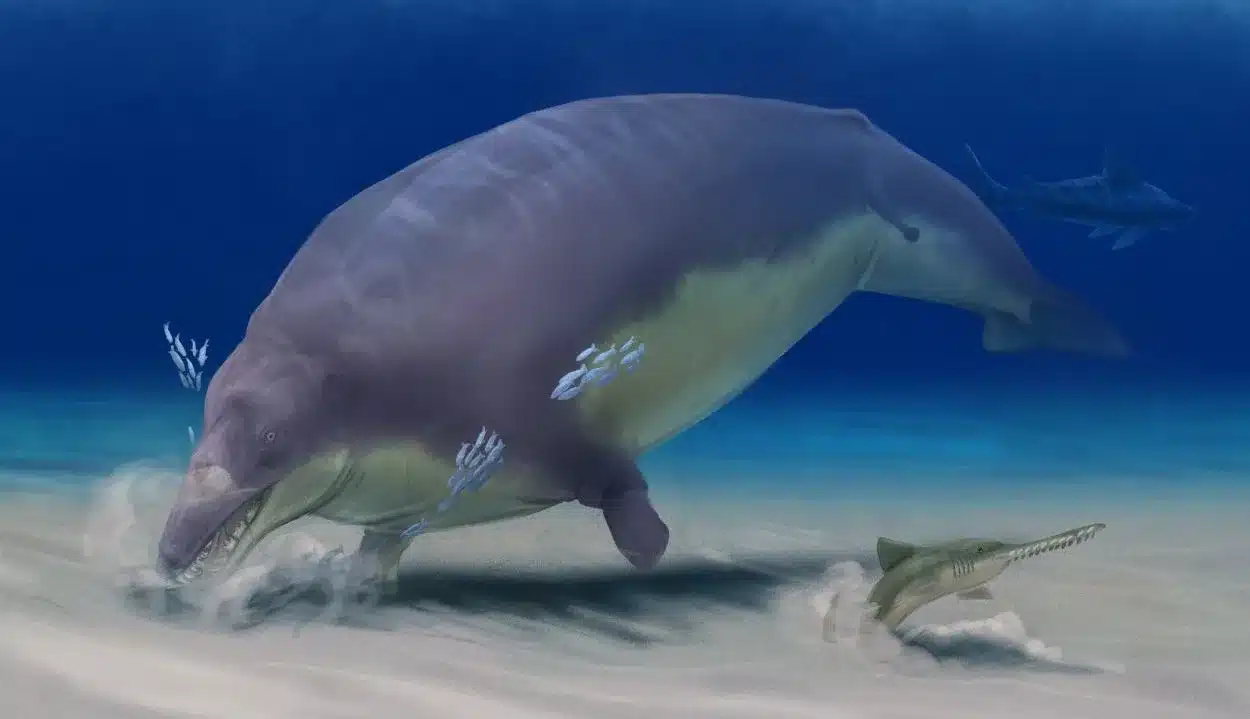New fossils discovered in Peru, known as Perucetus colossus, could potentially challenge the blue whale’s title as the most massive animal in Earth’s history. The Perucetus lived about 38-40 million years ago during the Eocene epoch and was estimated to be 66 feet (20 meters) long and weigh up to 340 metric tons. The average estimate of its weight is 180 tons, exceeding the blue whale, whose largest recorded weight is around 190 tons. Its dense and compact bones resemble the characteristics of the sirenians, another marine mammal group including manatees and dugongs.
Life and Behavior of Perucetus
Although cranial or tooth remains were not found, researchers surmise Perucetus’s lifestyle mirrored that of the sirenians, living near the bottom of shallow coastal waters and not actively preying. The heavy skeleton and the voluminous body indicate Perucetus was likely a slow swimmer. Researchers speculate it might have been herbivorous, feeding on small molluscs and crustaceans or even scavenging on vertebrate carcasses. Evidence suggests that Perucetus was related to Basilosaurus, another early whale species, indicating cetaceans developed gigantism at least twice: recently with large baleen whales and about 40 million years ago with the Basilosaurus relatives, including the extraordinary Perucetus.






